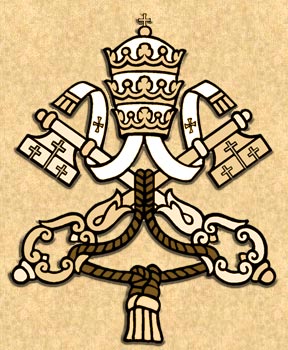June 8th is the feast of William of York (also known as William Fitzherbert and William of Thwayt).
Born early in the 12th century, William was, according to tradition, the son of Herbert of Winchester, Henry I’s treasurer, and Emma, sister of King Stephen (though this is now disputed). With such connections it was perhaps inevitable that, having been ordained a priest, he received rapid preferment and in the early 1130s became canon and treasurer of York.
In 1142 Stephen secured William’s election as Archbishop of York at the expense of a Cistercian monk called Henry Murdac. Murdac’s supporters questioned the validity of the election (not least because of the royal intervention), and Theobald, the Archbishop of Canterbury, decided to defer the consecration until Rome had had an opportunity to pass judgment.
St Bernard of Clairvaux, a towering figure not only within the Cistercian order but within the Church as a whole, backed Murdac, but in 1143 the Pope ruled that Theobald should proceed with the consecration provided that William could demonstrate his innocence of charges of bribery and excessive royal influence.
Once consecrated, William’s pastoral zeal soon won for him the affection of his flock, but may have been one of the reasons for his overlooking the need to obtain from the hands of Cardinal Hincmar the pallium which had been conveyed to him in 1146 by Pope Lucius II sent him in 1146.
Before William could be invested, Pope Lucius died and was succeeded by a Cistercian, Bl Eugenius III, whose election encouraged the English Cistercians, supported by St Bernard, to renew their campaign against William and on behalf of Murdac. Hincmar took the pallium back to Rome, William sold treasures belonging to York in order to fund his own journey to Rome – thus raising another storm of protest – and the last straw for Eugenius were allegations of irregularities in the appointment of William of St Barbara as Dean of York.
While William was in Sicily (taking refuge with his friend King Roger II), the Cistercian Pope deposed him and appointed Murdac in his place, though Stephen prevented him from taking up his see (probably because he wanted to use recognition of Murdac as a bargaining-counter for obtaining papal support for the idea that his son Eustace should be crowned as his successor in his own lifetime, thereby heading off the rival claims of Henry of Anjou).
William retired to a life of mortification and prayer in his home-town of Winchester, but, after the deaths of Bernard and Eugenius, appealed in 1153, who took the opportunity of the death of Murdac to restore William to the see of York.
On his return William treated the Cistercians with great generosity. Within a few weeks, however, he was dead – possibly by poison administered at Mass in the chalice. Miracles soon abounded at his tomb, from which (in 1223) sweet-smelling oil began to flow. In 1283 a shrine was constructed behind the high altar of York Minster to which his relics were translated.









No comments:
Post a Comment